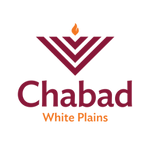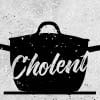There is a mitzvah to have warm food on Shabbat as a way to honor and delight in the day. Traditionally, this is done by serving cholent, a stew that was prepared before Shabbat and slow-cooked until Shabbat day.1 But cholent is more than just a classic Shabbat dish—it symbolizes the Oral Law’s authority.
The Karaites, who rejected the Oral Law and interpreted the Torah strictly according to its literal meaning, believed that the verse “You shall not kindle a fire in any of your dwellings on the Sabbath”2 prohibited any use of fire on Shabbat. As a result, they would sit in the dark and eat only cold food.
In contrast, the Oral Law, passed down through the generations, clarifies that while you can’t ignite a new fire on Shabbat, food that was already cooking before Shabbat can remain heated, and a candle that was lit before Shabbat can illuminate our homes. Cholent embodies this principle, as it’s prepared in advance and left to simmer throughout Shabbat. In fact, halachah encourages having a hot dish on Shabbat to distinguish Torah observance from the Karaite practice and affirm the authenticity of the Oral Tradition.3
There are many variations of cholent across Jewish communities. Ashkenazi cholent includes beans, barley, potatoes and meat, while Sephardi hamin or dafina adds whole eggs, exotic spices, and rice.
While the ingredients may vary (and we’ll leave it up to the cooks to describe what they put in their cholents), we’ll focus on the halachic considerations for preparing and serving your cholent.
Cover the Heat Source
The sages instituted that you can’t leave uncooked food on an open flame over Shabbat (shehiya), even if placed there beforehand, because you might forget that it’s Shabbat and stoke the embers in the oven, violating the Torah prohibition of kindling a fire during Shabbat.4
To prevent this, the sages required a sign that there was no intention of adjusting the heat. This was done by making the fire garuf v’katum, e.g., raking away coals or covering them with ash. Today, this is achieved on gas or electric stovetops by covering the burners with a blech (Yiddish for “metal sheet”).5
What Is Considered “Uncooked”?
Technically, the prohibition only applies to raw food that’s left on an open flame. But how cooked does it need to be?
The sages explain that the food need not be fully cooked before Shabbat. Rather, it has to have reached the stage referred to in halachic terminology as maachal ben Derusai’i (“the food of ben Derusai’i,” a bandit who was always in a hurry and would eat his food partially cooked).6
Some authorities define this stage as one-third-cooked,7 while others say half.8 (For example, if a dish requires six hours of cooking time, it would be one-third-cooked after two hours and half-cooked after three hours.)
Although rabbinic law typically follows the more lenient opinion, the severity of Shabbat calls for extra caution. So ideally, food should be at least half-cooked before Shabbat begins, unless no other option exists. However, after the fact, if the food was at least one-third cooked before Shabbat, it’s OK to eat it.9
So theoretically, if you knew for certain that the food was cooked, you wouldn’t need a blech. But the common practice is to still use a blech for the following reasons:
- If you want to remove the pot and then return it to the fire on Shabbat, you need a blech (as we’ll discuss later).
- It’s not always possible to ascertain how well-cooked the food is.
- According to some opinions, since cholent is a type of food that generally improves the longer it cooks, it’s never really considered “cooked” enough to leave on an open flame. Although the halachah doesn’t follow this opinion, many are careful to still have a blech.10
How Do You Cover the Flame?
Gas or Electric Stovetop: The widespread custom is to cover the stovetop with a blech (metal sheet). Some opinions say that since nowadays the fire is adjusted via the knobs, you should also cover the knobs that control the flame.
Crockpot: Cover the heating element—whether it’s at the base or sides of the outer pot—with a sheet of foil. This serves the same function as a blech. According to some opinions, it’s preferable to cover the knobs as well.11
Although some are of the opinion that if you’re using a crockpot without any adjustable heat settings, you don’t need to cover it,12 many disagree and hold that even if it is not adjustable, it still requires a blech.13
Alternative to the Blech: Raw Meat
If you don’t have a blech or foil, place completely raw meat in the pot right before Shabbat (right before sunset). This allows you to leave the pot on the uncovered flame even if other ingredients in the pot have already started cooking but are not yet half-cooked.14
How does raw meat help? Because you won’t be tempted to adjust the flame, as the raw meat won’t be ready in time for the Friday night meal, even if the fire is stoked. And for the daytime meal, the meat will have been on the flame long enough that there is no concern that you’ll be tempted to hasten the cooking. However, this only applies to meat—other raw foods, such as vegetables or legumes, which cook quickly, may not be placed on an uncovered flame before Shabbat unless they’re already half-cooked, as explained above.
Note: If you use this method rather than covering the heat source, you can’t return the pot to the fire once it’s taken off.
How to Serve the Cholent
As long as your cholent is on the fire (or heat source) you cannot even stir the pot, as this is considered cooking on Shabbat. If you want to take something out of the pot, you need to first remove the pot from the fire or heating element.15
Some are stringent not to remove the pot lid while the pot is on the fire even if the food is already fully cooked. They are of the opinion that only once you’ve removed the pot from the fire, you can uncover it, and then cover it again before returning it to the fire. Practically, if needed, one may be lenient once the food is fully cooked 16
Returning the Pot (Chazarah)
After removing a pot from the blech, it can be returned only if all the following conditions are met:17
- You initially intended to return it when you removed it.
- The food is fully cooked.
- The food is still warm and has not completely cooled.
- It has not been transferred to another pot.
- You continue holding the pot until placing it back. Ideally, the pot should not be put down, but if the pot is too heavy to hold, you can rest it on a countertop or another surface while still supporting it with your hand, in a way that if you would remove your hand it would fall.18
What to Do If Cholent Is Burning?
If you discover your cholent is burning and want to add some hot water to the pot, you can do so under the following conditions:19
- Both the water and cholent are fully cooked (e.g., the water was heated in an urn before Shabbat).
- The water is poured directly from the urn into the cholent, without being transferred to another utensil in between.
- The cholent pot is on a covered heat source (e.g., a blech) (if using a crockpot or an electric plate without adjustable heat settings, covering is not required).
- You remove the cholent from the fire (following all chazarah conditions), add the water, and then return it.
Keeping it Pareve
Now, dispensing hot water onto your steaming cholent can render your urn “meaty,” which is a problem if you want to use the water in dairy coffee, etc.
To avoid this, after removing and uncovering the cholent pot, wait for the steam to dissipate before approaching the hot water urn or pouring the water. Additionally, hold the pot at a distance so that nothing splashes into the urn.20
Alternative to adding water: If, for example, the pot is on a large blech and only part of the blech is directly on the flame, you can move the cholent pot further away from the heat. Similarly, you can place another layer of “blech” to distance the pot from the heat.
Adding Salt and Spices to Cholent on Shabbos
You can’t add salt or spices directly to the pot, even if it was taken off the fire.21
What about once the cholent has been dished into a serving bowl or your plate?
Well, regarding liquids, the rule of thumb is that by the time it has been transferred twice, it loses its cooking heat and most spices may be added.
Some apply the same rules to solid foods, like cholent, while others are stringent, arguing that it retains its heat longer. Practically, one may rely on the lenient view, but others say to follow the stringent opinion. Here is how it plays out:
Salt: Table salt is commonly produced through evaporation and drying. If it was heated to the point that you cannot comfortably touch it during processing,22 it may be added to hot cholent that has been removed from the fire and then put onto your plate (kli sheini). Why? Once something has been cooked, it can’t be cooked again (although it may be subject to other prohibitions). In the United States, almost all table salts (except for rock or mined salts) are considered cooked. This works provided that the salt will not dissolve.23
Spices: Spices like pepper, garlic and dried herbs are usually not heated during processing and remain raw. According to the stricter opinion, you can't add spices to cholent even if the cholent is transferred to a serving dish and from there to your plate (i.e., kli shlishi). You would have to wait until it cools down a bit in order to add spices. According to the more lenient opinion, it’s OK to add spices once it’s on your plate.24







Join the Discussion